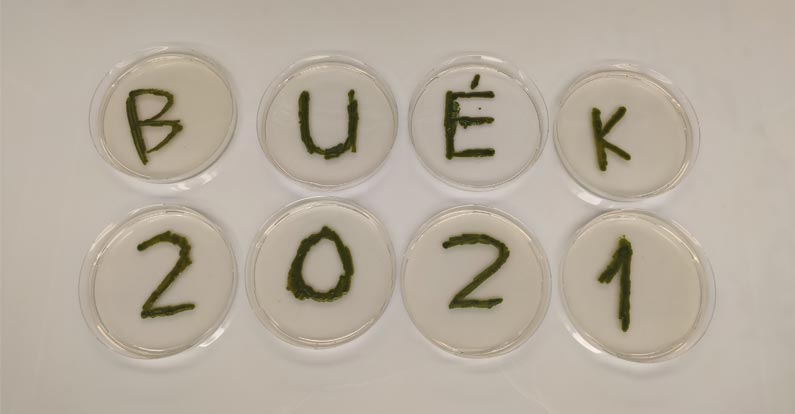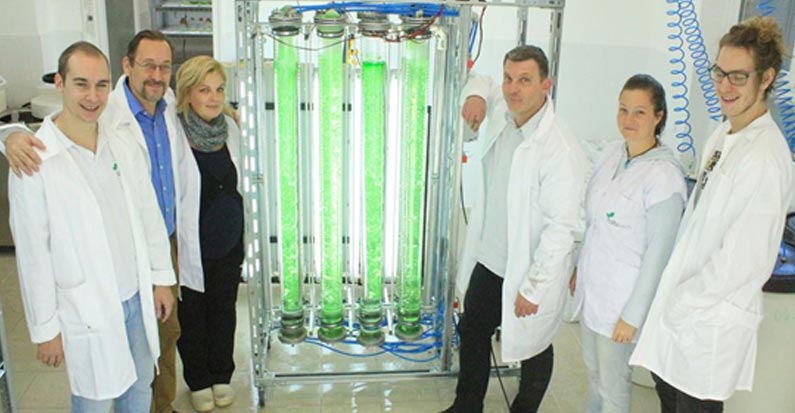With the collaboration of the Balaton Limnological Institute (Hungarian Academy of Sciences) different natural green, red and diatom algal coatings and isolating planktonic diatom strains were collected. EPA and DHA content of biomasses were determined by means of gas chromatography.
Each of the isolated diatom strains from Lake Balaton was proved to produce significant amounts of EPA. DHA and AA production were detected in case of neither Gomphonema parvulum nor Synedra acus var. radians strains, while Nitzshia palea was shown to produce boh, besides EPA. Cyclotella meneghiana and Nitzshia cultures contained EPA and DHA in high concentrations with DHA being approximately one fifth-one sixth the amount of EPA. DHA-content proved to be in positive correlation with EPA, as it increased significantly and pro rata (1,0-5,0 mg/g) with the increase of EPA concentration. At the same time AA concentration remained constant and independent from EPA concentration, ranging between 4,0-5,0 mg/g. Highest EPA concentration was detected in Cyclotella meneghiana cultures (50,5 mg/g). KB-14 Nitzshia sp. and KB-15 Nitzshia palea strains – producing larger biomass/unit volume – proved to have equal EPA producing capacities (14,0-16,0 mg/g EPA).
Examining natural algal coatings Bangia atropurpurea proved to contain EPA in the highest concentration (9,23 mg/g EPA). Cladophora coatings considerably differed in their EPA contents, presumably due to differences in water temperatures of the sampling sites. EPA and DHA concentrations of samples originating from 10°C and 25°C waters significantly differed (2,20 and 4,69 mg/g EPA). However, colonies – surprisingly thriving in 5°C water – synthesized twice as much EPA as strains from warmer waters, while DHA was present in only a quarter (9,76 mg/g EPA and 2,34 mg/g DHA).
The same was observed when examining Diatoma coatings, as the Danubian Diatoma coating from 6°C environment produced about four times much EPA as the Diatoma coating originating from the 10°C water of Lake Balaton (7,05 mg/g EPA).
During culturing of freshwater algae it has been proven that diatom strains Cyclotella meneghiniana and Nitzshia sp. are able to accumulate EPA in an amount exceeding that of saltwater strains. In terms of EPA producing capacity Bangia, Cladophora and Diatoma species approximate saltwater strains cultured in fermentors.




